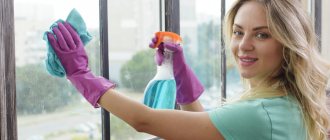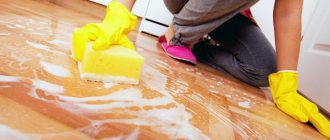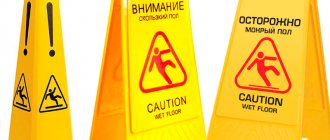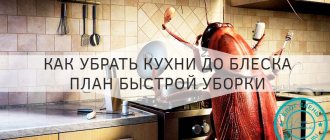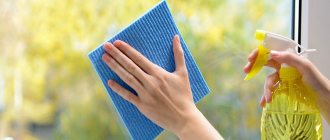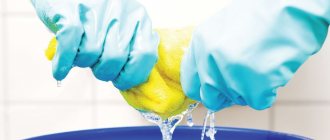Carrying out general cleaning is an absolute necessity in all catering establishments, children's and medical institutions. It can be performed by staff or by a professional company. In the second case, many advantages await, and the price of the work will be low and affordable for everyone. The key feature of such work is the availability of specialized equipment and detailed adherence to sanitary and epidemiological standards. Cleaning is carried out in all institutions on an ongoing basis - daily and more thorough (general) - once a week.
List of works included during general cleaning
General cleaning is putting everything in order in all existing premises. This concept includes a number of basic actions:
- Garbage collection. As a rule, this operation is carried out with a vacuum cleaner or broom. The use of a particular tool is determined by the amount of debris.
- Wiping off dust. This will require a soft cloth and, in some cases, a cleaning agent. If there are three or more rooms, it is recommended to periodically change the rags for new ones.
- Washing windows. It is necessary to prepare soft rags and window cleaner. It is not recommended to clean windows in a multi-storey building; it is better to contact a cleaning company that will do the job efficiently and quickly.
- Carpet cleaning. Involves the use of cleaning products. In private homes, it is easier to take the carpets out into the yard and wash them. If heavily soiled, contact your nearest dry cleaner.
- Washing floors. In this case, a floor rag, a mop and a bucket of water, and a floor cleaner will come in handy. To carry out better cleaning, if possible, use steam mops equipped with several attachments.
This is the main list of works, without which not a single general cleaning can do. Also, if necessary, cleaning of furniture, carpets, washing mirrors, washing curtains and curtains can be carried out.
If during general cleaning you were unable to wash your furniture and you decide to replace it with new ones, calligaris will help you do this.
Recommendations from Rospotrebnadzor
The most detailed general recommendations are contained in the recommendations of Rospotrebnadzor, given in Letter No. 02/3853-2020-27 dated March 10, 2020. Employers are recommended:
Provide an antiseptic at the entrance and monitor its use by employees; Perform continuous temperature checks using a non-contact method; carry out high-quality cleaning, pay special attention to pens, eating rooms, toilets, etc. every two hours; how often general cleaning of premises is carried out is established by recommendations for enterprises in specific areas of activity
Typically, such cleaning is mandatory before the start of an activity, and then the frequency is not provided. There are exceptions: for example, in paid wards in medical organizations, general cleaning must be carried out at least once a month; ventilate the rooms every two hours; carry out air disinfection; use disposable tableware for employee meals, which is then destroyed; reusable dishes should be carefully processed in specialized machines; allocate a separate room for meals, prohibit dining on site; clean it every day using disinfectants.
Since Rospotrebnadzor Letter No. 02/3853-2020-27 dated March 10, 2020 was issued quite a long time ago and does not contain mandatory standards, entrepreneurs need to be guided by the joint venture and regional regulations.
Types of work
General cleaning is divided into several types of work:
- Daily. The main type of work carried out daily is dusting.
- Periodic. Includes washing floors, removing dust and debris.
- Seasonal. Basically, this type of cleaning is carried out in autumn and spring. The main task during this period is to wash the windows and install mosquito nets.
- After renovation. Depending on the type of repair performed, the complexity of the work and the type of tool are determined.
Inventory
To achieve the necessary and quick results, prepare tools and detergents. The general principle of cleaning work is carried out according to the following principle:
- Living areas are cleaned first.
- After which the secondary priority rooms are cleaned. This includes bathrooms, kitchens, hallways and corridors.
Cleaning various surfaces involves the use of individual detergents. They can be in the form of a powder, liquid or paste. Liquid cleaners and aerosol cans are used to clean glass and mirrors.
An indispensable assistant when cleaning carpets and upholstered furniture is a vacuum cleaner. To perform some tasks, it is better to use washing analogs that are distinguished by the presence of greater functions and the performance of non-standard tasks.
The simplest operations are carried out with other tools. For example:
- To perform wet cleaning, it is enough to have a mop and rags on hand for cleaning the floors.
- Paper towels or a soft cloth are suitable for wiping off dust.
- The bucket is used as a container for collecting water.
- Don't forget about personal protective equipment. These could be rubber gloves.
- Cleaning bathrooms is not complete without special brushes.
More recently, devices capable of cleaning surfaces such as tiles, windows and mirrors with steam began to appear on the markets.
We clean the kitchen
The main problem in the kitchen is the accumulation of fat in certain areas. In this case, both powders and gels can be used to clean fat. The treatment can be carried out on metal, glass or plastic surfaces.
Work plan
- Organize your closet drawers. We take out the contents, sort through and get rid of the unnecessary and rarely used. We thoroughly wash the shelves and trays for tableware. We wipe down the inside walls of the cabinets.
- We clean household appliances. First, apply the cleaner to the surface of the stove and inside the oven. While the fat is soaking, take care of your kitchen appliances – electric kettle, microwave and food processor.
- Cleaning the refrigerator. Initially, you need to defrost it by waiting until the freezer compartment has completely thawed. We take out the shelves and soak them in a deep basin. We wet clean the inside of the refrigerator using a weak vinegar solution and a damp cloth. Don't forget to wipe everything dry after finishing work.
- Cleaning windows and window sills. For this, it is recommended to use special cleaning products. Their advantage is the absence of divorces. Remove curtains and drapes and put them in the wash. Wipe the window sills with a damp cloth.
- Cleaning countertops and cutlery. When all the work in the kitchen is completed, you can begin wiping the countertops and kitchen furniture. In this case, it is also recommended to use household chemicals.
- At the final stage, wipe the sockets and switches, having first turned off the power supply to the devices. Pay attention to the cleanliness of door handles, lampshades and other accessories. After finishing cleaning the kitchen, you can enjoy the cleanliness of the kitchen for a long time.
Concept of current disinfection
The term “current disinfection” refers to the cleansing of the area where the infection has spread. The purpose of this procedure is to destroy the source of the disease (causative agent).
Indications for the implementation of measures are:
- the patient’s presence in the source of infection until hospitalization;
- outpatient therapy of an infectious patient;
- in a situation where the sick person releases bacteria into the external environment (coughing, saliva, sneezing) until complete recovery;
- stay in the apartment of a convalescent (patient in the recovery stage) until deregistration at the tuberculosis dispensary.
Disinfection is organized by a specially trained medical worker who has identified an infectious patient, as well as sanitary and epidemiological control services. The role of the medical staff is to convey to the patient how to daily disinfect the place of residence.
There are several groups of measures for ongoing disinfection:
- sanitary and hygienic works;
- application of measures to disinfect environmental objects and physiological secretions of the patient.
Current disinfection is carried out by relatives living with the patient.
Bathroom cleaning
Before you start cleaning your bathroom, do a thorough inspection, especially in areas that are hidden from view. These could be corners or the top of a cabinet that is located under the ceiling. It’s always good to make an action plan before starting any task:
- Cleaning the shower head. Take a bag and pour 9% vinegar into it. Wrap it around the shower head and secure with an elastic band or rope. Leave for 1 hour. Then remove the bag and turn on the hot water tap. To remove small plaque, once is usually enough.
- Cleaning the seams of the tiles. Take fabric bleach and mix it with baking soda. The result should be a creamy consistency. Armed with a toothbrush, apply the paste to the grout lines and leave overnight. In the morning, without much effort, you can remove yellow stains with a brush and warm water.
- Let's add shine to the chrome parts. Buy a lemon from the store and cut it in half. Treat the surfaces of taps, handles and holders with the inside.
- We clean hard-to-reach places. Considering the fact that a bathroom is usually a small room that requires placement of many essential items, there are plenty of such places.
- We clean the drain system. If for some reason you don’t have a means to clear clogs on hand, then you can get by with effervescent substances. Alcoseltzer and Aspirin fall into this category. After removing the mesh, drop a couple of tablets into the drain and pour 100 milliliters of vinegar into it. Don’t forget to rinse thoroughly with hot water after 5 minutes.
- We give the mirror its original purity. When stains appear, it is better to immediately take measures to eliminate them. But if they still remain for a long time and have time to be absorbed, then strong tea with salt will help cope with this problem.
- Wash the curtain. To achieve better results when washing shower curtains, use the proven method and add half a glass of 9% vinegar to the washing powder.
This completes the bathroom cleaning.
Who is leading and why?
The employer has the obligation to comply with sanitary and epidemiological requirements. One of them is keeping cleaning logs to help organize and monitor this work. There are several of them:
- accounting for current cleaning;
- accounting for general cleaning;
- disinfection.
The management of medical, educational organizations, catering establishments and other public places are required to maintain these documents by sanitary and epidemiological requirements. A separate SanPiN has been developed for each area of activity, which contains requirements on the frequency and methods of cleaning, including general cleaning.
In addition, the sanitary and epidemiological rules SP 3.1.3597-20, approved by the Decree of the Chief Sanitary Doctor No. 15 of May 22, 2020, and recommendations of Rospotrebnadzor No. 02/3853-2020-27 of March 10, 2020, No. 02/6338-2020-15 dated 04/07/2020, all organizations and entrepreneurs are required to carry out special measures to prevent the spread of coronavirus. These include additional methods and modes of sanitation and disinfection of not only objects, but also air.
Recommendations from Rospotrebnadzor dated September 29, 2020 require that enterprises be disinfected every 2 hours and have a supply of disinfectants for at least 5 days. A disinfection log is maintained to confirm compliance with these measures.
It is important that the sample journal for treating premises with disinfectants against coronavirus, developed at the enterprise, takes into account all methodological recommendations
Read more: explanation from Rospotrebnadzor on carrying out disinfection measures in office premises, along with instructions on the procedure for carrying out disinfection measures in order to prevent a new coronavirus infection in office premises.
Profile SanPiN may oblige you to maintain additional accounting books. For example, this is done by SanPiN 2.1.3.2630-10 for medical organizations.
A designated person, whose data is indicated in the document, is responsible for maintenance. The responsibilities of this employee are specified in the job description. For violations committed, both this employee and the head of the enterprise are brought to administrative and other types of liability.
How to find out about restrictions and other measures due to coronavirus
ConsultantPlus has collected all the current rules in one review: what is prohibited and what is allowed, whether it is mandatory to wear masks, what support measures are still in effect, and what monetary payments individuals and organizations can still receive. Convenient to keep track of changes. Free access for 2 days.
Cleaning plan after renovation work
Apartment renovation always involves a lot of garbage, so high-quality cleaning is a necessity. It takes a lot of effort and time to complete the task, but, alas, there is no other way. Of course, there are many cleaning companies involved in cleaning premises that will quickly and efficiently complete all the work, but this requires significant costs. Therefore, in order to save budget funds, it is quite possible to cope with cleaning after repairs on your own.
The main thing is to act according to a pre-made plan
- Remove large construction debris. To begin, put on protective equipment, including safety glasses, rubber or cotton gloves and overalls. Further, it is better to bundle waste such as wallpaper into a separate roll to save space in bags. The rest of the bulky waste is placed in bags. Then sweep the floor and take the bags of garbage to the landfill.
- Wash the walls, ceiling and floors. After taking out the trash, it's time to start cleaning all surfaces. First, take a vacuum cleaner and collect all the dust. If there is a washing model, this will reduce the time it takes to clean the room, since it will perform two types of work at once.
- We clean furniture and other interior items. As a rule, before starting repair work, all furniture is covered with plastic film, but even such a coating cannot provide complete protection. To clean upholstered furniture, it is recommended to use a swab dipped in milk. It is able to cope with minor dirt in the form of stains.
- We wash glass and mirrors. To do this, use sponges, rags and special products that are designed for these purposes. It is worth remembering that washing windows in a multi-storey building is not safe, and therefore requires the hiring of qualified workers equipped with special equipment and equipment.
- At the final stage, you need to wash the remaining items and accessories: lampshades, radiators, sconces and others.
In some cases, the use of chemicals such as solvents is acceptable. In other cases, use regular cleaning products.
Final provisions
In conclusion, I would like to remind you once again that the sphere of medical services is a special category of activity, which is quite logically subject to the most stringent sanitary requirements and the implementation of which is monitored regularly by the relevant supervisory authorities. And sanitary requirements are not developed and approved out of nowhere; failure to comply with them several times increases the risk of patients contracting dangerous infections. The better and more reliable each medical institution is equipped, the safer and more successful the treatment of each patient will be.
Based on the data from Reviews of law enforcement practice of control and supervisory activities of the Ministry of Defense's implementation of established sanitary requirements for heating, microclimate, ventilation and air environment, carried out by Rospotrebnadzor and its territorial bodies, as well as the Federal Medical and Biological Agency, the main violations identified are the following:
- not all mechanical supply and exhaust ventilation systems are certified; the frequency of cleaning and disinfection of ventilation systems, replacement of high-purity filters, and cleaning of ventilation chambers is violated;
- unregulated air conditioning and split systems are used;
- microclimate parameters and indicators of microbial contamination of the air are not monitored at least once every 6 months;
- The ventilation system does not work / does not work well;
- annual cleaning and disinfection of mechanical supply and exhaust ventilation systems, monthly cleaning of ventilation chambers and air intake chambers have not been carried out;
- medical staff washes, dries and irons medical clothing in clinical departments, operating rooms, and intensive care units, which, in turn, violates the permissible microclimate parameters;
- in the operating room, intensive care unit, diagnostic ward of the emergency department with an intensive care unit there is no independent ventilation system.
As for FAPs and outpatient clinics, the technical condition of most of them leaves much to be desired. Currently in Russia, only half of such medical institutions meet current sanitary requirements; many first aid stations and outpatient clinics do not have central heating, water supply, or sewerage.
In any case, responsibility for compliance with sanitary rules and regulations lies with the Ministry of Defense, their managers and other officials
At the same time, it is important to remember that in cases of group infectious and non-infectious diseases, emergency situations in the operation of heat supply systems, ventilation, water supply, sanitation, technological equipment, which create a threat of the emergence and spread of infectious diseases and poisonings, the heads of the Ministry of Defense bear responsibility for organizing operational notifications to territorial bodies authorized to carry out state sanitary and epidemiological supervision, and for ensuring the implementation of the necessary set of preventive and (or) anti-epidemic measures
Secrets that will help you cope with work easier
Performing general cleaning always requires a lot of effort and energy, and most importantly, it all takes a lot of time. To ensure that the cleaning time is unnoticeable, and that you also have enough strength and energy to do other things, we suggest that you familiarize yourself with a few tips.
Tips for effective cleaning
- Music is a great helper. Light, unobtrusive music https://myfreemp3.vip/ will allow you to better concentrate on work.
- Plan your actions. When making a plan, divide everything into small actions. Thus, you will be able to get rid of the internal fear of a large amount of work.
- Rest breaks. Many people are mistaken in thinking that it is better to do all the work at once without breaks. Work efficiency will be much higher if you take short 15-minute breaks every hour or two.
- Prepare tools and cleaning products. It is better to immediately put all the necessary equipment in one place, so as not to be distracted by searching during the work process.
- Prepare a basket to collect clothes. Cleaning will go faster if you first collect the clothes in a basket, and after finishing the general cleaning, put them in their places or put them in the wash.
- Empty shelves - quick execution. You should not try to wipe dust between books or other objects that are in the closet - this will take a lot of extra time. Among other things, when you put it back together, you may want to remove some items from the shelves.
- A hairdryer and vacuum cleaner are excellent helpers when cleaning hard-to-reach places. For example, this could be a fan in an air duct or a radiator in a heating system. Usually, a vacuum cleaner is enough to complete this task, but sometimes the dirt accumulates in such dense layers that only a hair dryer can help in such a situation.
- Wet wipes. To wipe hard-to-reach places, wet wipes placed on a thin and long object can be useful. For example, a screwdriver.
- Clothes roller – dust and lint collector. Textile parts of the interior accumulate a lot of dust and lint, and caring for such material presents some difficulties. Therefore, it is easier to use a roller with a sticky surface.
- Fine salt against dirt on the carpet. Few people know such an effective recipe, but it exists. Sprinkle fine salt over the carpet and use a spray bottle to spray water. Once the carpet is dry, all that remains is to vacuum up the salt.
- Vinegar for plumbing. Limescale deposits can be easily cleaned after treatment with vinegar essence. To do this, you need to dampen a rag and wrap the problem areas. After half an hour, you can wash it off.
- A lot of foam is not good. Every housewife who has ever encountered the problem of a large amount of foam understands how difficult it can be to remove it from the carpet. It’s easier to dilute the product in water and clean the surface. The effect is the same, but less effort is spent.
- Cleaning rarely used items. An object left untreated will constantly remind itself, causing a feeling of unfinished business.
- Ventilation – clean indoor air. Be sure to ventilate the room after completing general cleaning. During cleaning, a lot of chemicals are used, the smell of which remains in the air for many hours.
Performing general cleaning according to the above rules will bring a lot of pleasure and benefit. Using these tips, any housewife can easily cope with this task.
